SAVE THE FROGS! Task Force Member Biraj Shrestha returned to the Manaslu Conservation Area in March 2017 for a three week research expedition into some of the world’s most dangerous montane amphibian habitats. The “SAVE MANASLU’S FROGS! Research Expedition” was the first expedition of its kind. SAVE THE FROGS! thanks our generous donors who helped us raise $1,700 to fund this frog conservation initiative. Read on to learn about SAVE THE FROGS! Task Force Member Biraj Shrestha’s first-hand account to protect the beautiful stream frogs of Manaslu in Nepal’s remote Himalayas.
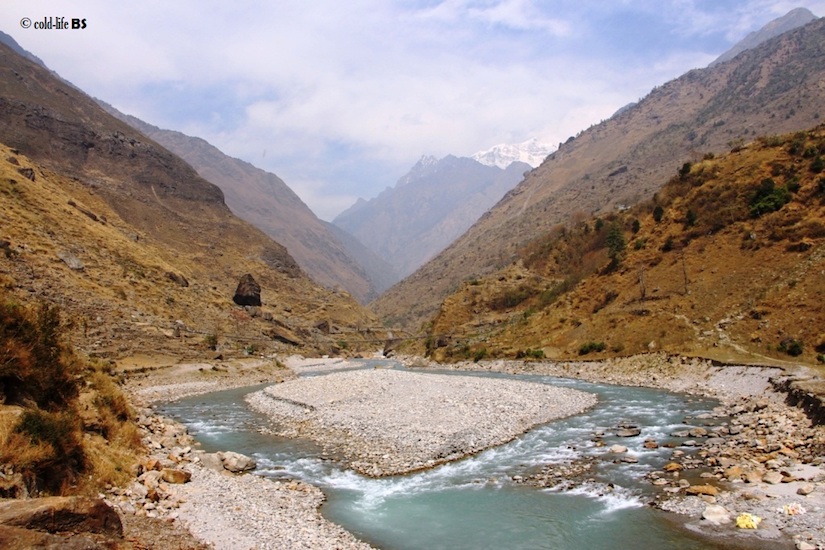
Budhi Gandaki River flowing swiftly
“We’ve made it safe and sound this time,” I said it to my friend on the last day of our expedition while we stopped by in a local hotel at Soti. From here, one could easily get a local bus around to return back in the city. Those of you who have little idea of what I’m talking about, please grab a coffee first and allow me to explain my position. We have recently completed our 21 days (March 1-21, 2017) ‘SAVE MANASLU’S FROGS! Research Expedition’ trip to Manaslu Conservation Area, Gorkha district, north western part of Nepal. This expedition was a part of the amphibian research and conservation work I’ve been carrying out in Manaslu since early 2016, ‘Saving Mountain Frogs (Paha) Before It’s Too Late; Conservation Effort at Manaslu Conservation Area, Gorkha District, Nepal’.
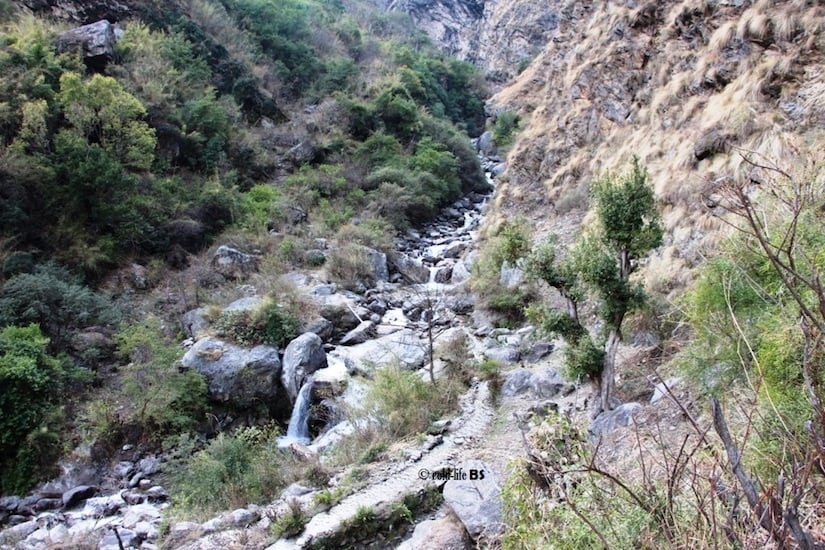
Stream frog (paha) habitat in Manaslu
I worked in the remote landscapes of Manaslu in April-May 2016 for over a month doing amphibian survey, celebrated 8th Annual Save The Frogs Day with local community and did school awareness programs. Then, I revisited Manaslu in September 2016 for follow-up visit but as we reached Tatopani at 8:30 in the morning, a great tragedy struck in the form of landslide. We escaped death by an inch but unluckily a group of Spanish trekkers who were just ahead of us met the terrible accident. Four people died at the spot and multiple injured individuals were flown to hospital via helicopter. Well, Manaslu is one of the most dangerous remote montane amphibian habitats in Nepal. The only trekking trail runs through the deep gorge with raging torrent of Budhi Gandaki River below fed by the melt of world’s eighth highest peak, Mt Manaslu (8,163 m asl).
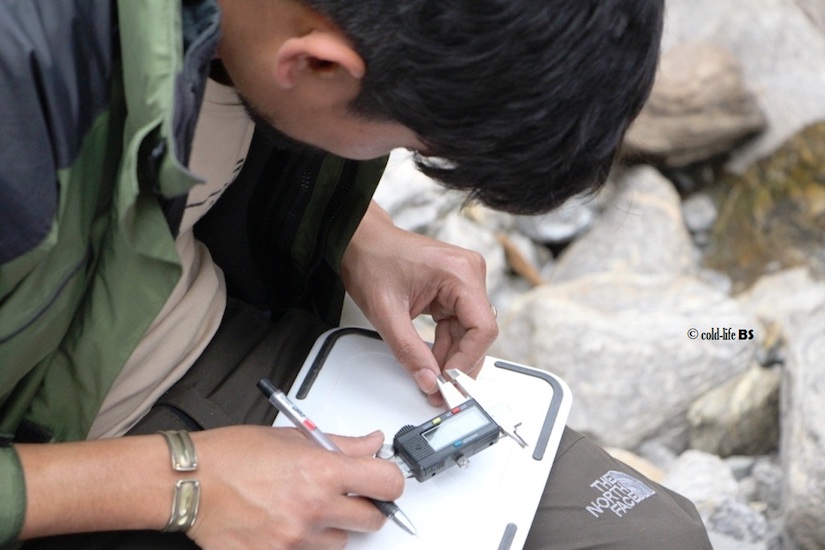
Taking measurements of an unidentified tadpole at Yuwang River, Manaslu
The disastrous earthquake of 2015 whose epicenter Barpak was just beneath the Manaslu has also hugely added vulnerability to the geography and fragile mountains. After we witnessed the landslide on second field visit, I was so traumatized and spent days agonizing whether I should resume my incomplete tasks or not. But call it sheer stupidity or the love of frogs! we geared up, improved morale and set out to achieve the mission of frog conservation in the himalaya. This recent expedition which happened to be my third quest was able through precious donations that came to SAVE THE FROGS! from frog lovers all around the world. Thank you once again for that!
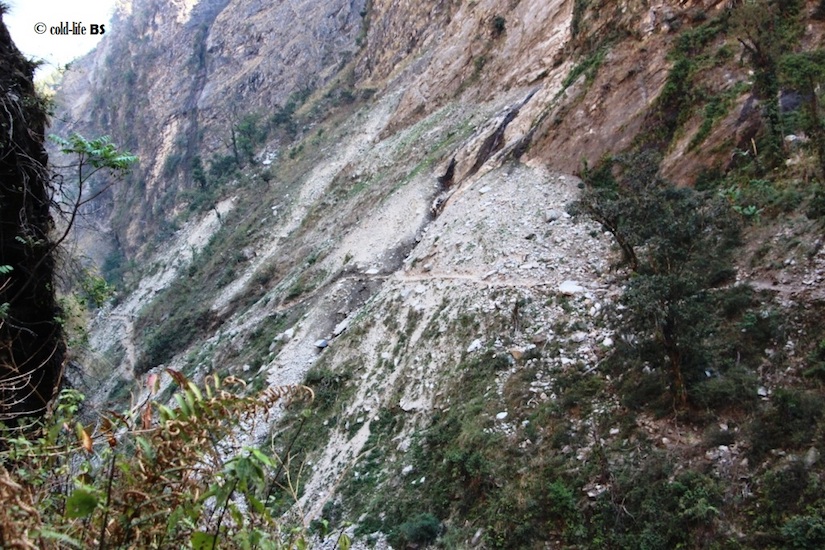
Narrow eroded trail at Tatopani
Our journey began as we headed to Gorkha district from Hetauda in a local bus so as to collect the research permit from Manaslu Conservation Area Project (MCAP) office at Gorkha city. I met the newly appointed project coordinator of MCAP, briefed about our work at Manaslu and obtained the permit. On the next day, we took another four hours bus ride to Arughat, NE from Gorkha and from there another two and half hours bus ride until we reached Soti. This is the point where the vehicular road ends and trekking starts. We stayed the night at Soti, saw a flock of tourists with their guides, mules grazing around and raging Budhi Gandaki River nearby which was the ambience of Manaslu calling, I know!
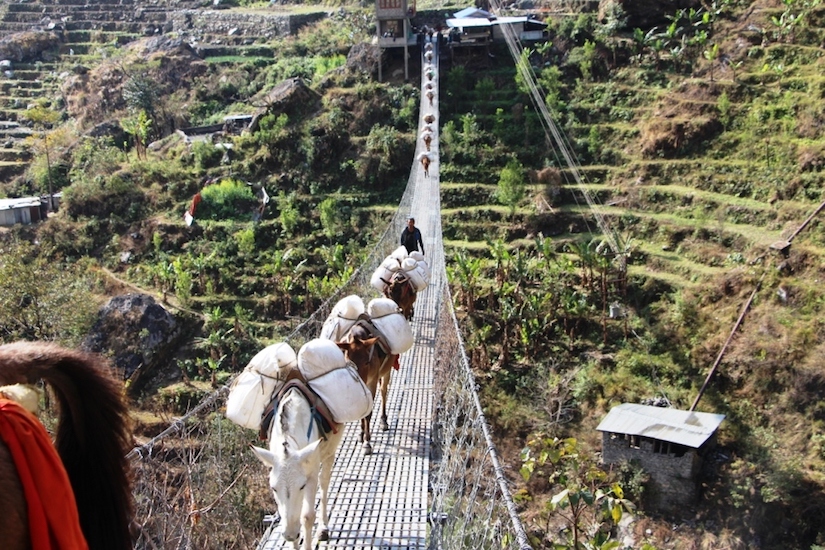
The mule train that helped tourists carry their equipment and supplies
Early morning the following day, we started trekking and let me tell you that it’s a very strenuous everyday 8-10 hours walk with rise in elevation at Manaslu. We travelled a total of 48 kms length rugged trail (dangerous oftentimes!) to enter Jagat and exited through the same route. We started from Soti (579 masl) to Liding, Lapu besi (775 masl) and Machikhola (918 masl). The next day, we started from Machikhola and reached Tatopani (956 masl). I had the jitters when crossing the narrow eroded trail where we witnessed a huge landslide in September 2016. Actually, there are plenty of landslide or rock fall areas in Manaslu circuit after the earthquake.
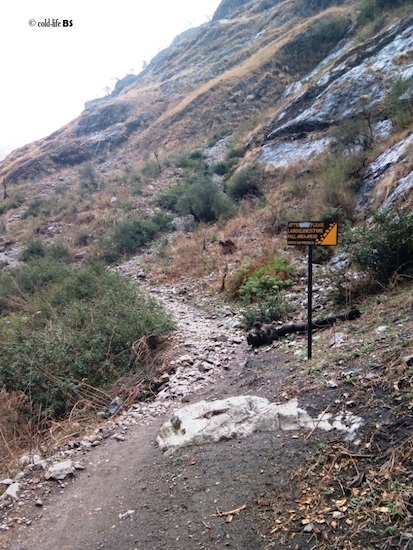
Landslide sign post installed by MCAP
After Tatopani, we crossed Dovan, Syaulifedi, Thadodhunga, Yarubagar and reached Jagat (1,351 masl). This is the entry place for the Manaslu Conservation Area. Since we led our expedition on the start of spring, we hoped for a pleasant weather in the mountains but you never can tell. It rained cats and dogs in the lower regions from the day we entered Manaslu while the northern areas snowed without stopping until our final day of depart. The temperature was down throughout our expedition with frequent storm and strong winds. Crikey, it was only the pre-monsoon season?
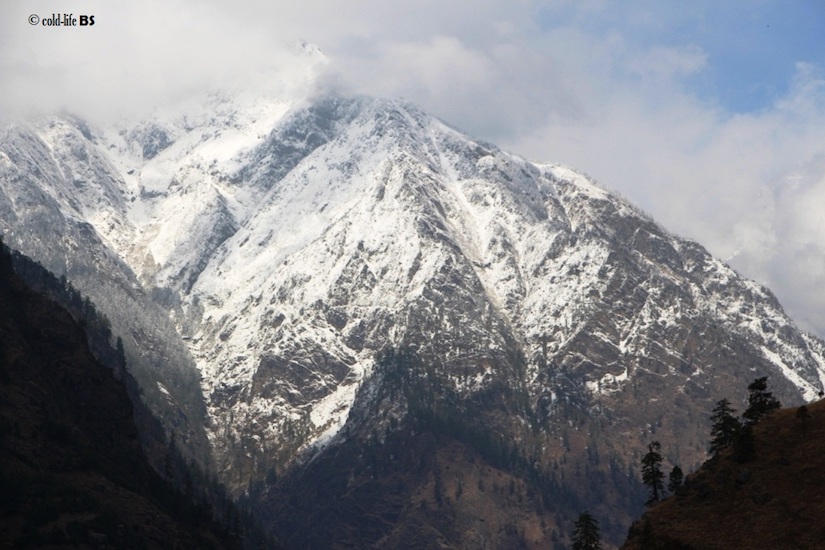
Snowy mountain tops
That unpredictable weather hugely affected our amphibian survey. We walked a transect of 45.6 km from Jagat to Lokpa, Dyang and Prok village doing Visual Encounter Surveys (VES), did stream surveys and 10×10 sq. meters quadrat surveys. However, we didn’t see any adult frog/toad this time nevertheless; we observed egg mass and tadpoles of amphibians.
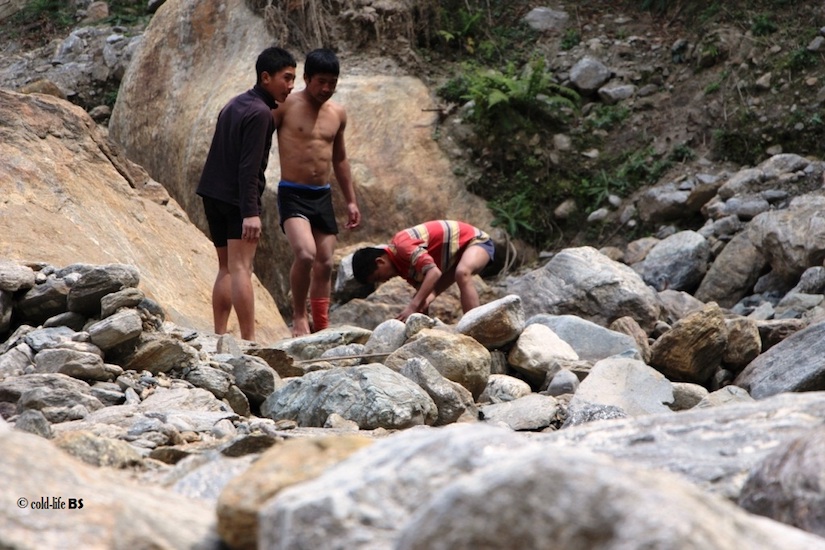
Local boys helping in stream frog’s survey
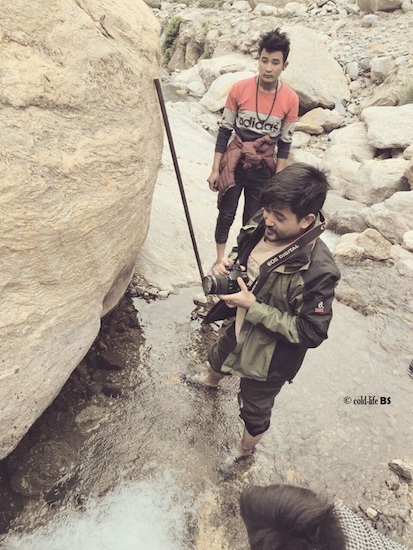
Trying to shoot stream frog’s (paha) egg mass in clumps
We saw clumps of stream frog’s (paha) egg. They were found clinging underneath of rock in small streams. The eggs of toad were found in a different fashion. Toads lay their eggs in a long chain of jelly coated membrane and found floating in stagnant water or less current water. The tadpoles are unidentified and easily observed at bottoms of mountain brooks. We did quadrat study in forests and agricultural lands but didn’t spot any amphibian. Local people said it was the unfavorable weather and coldness that restricted sighting amphibians.
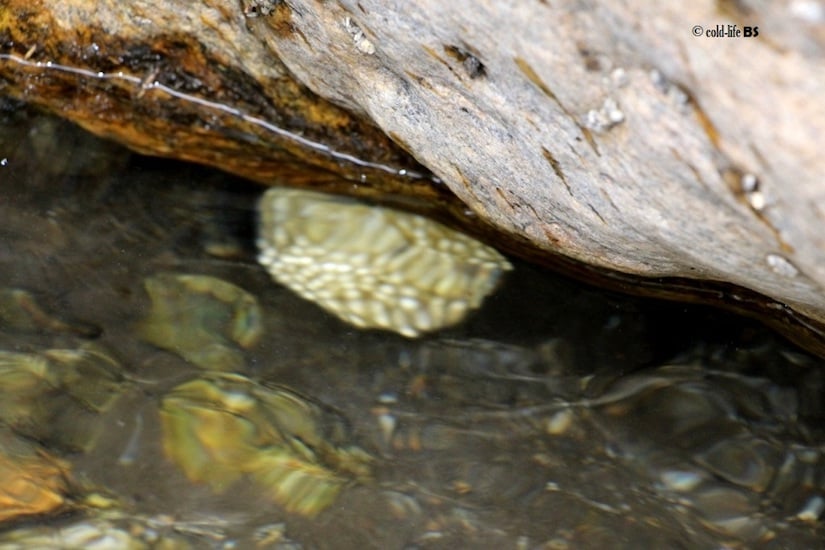
Paha egg mass in clumps
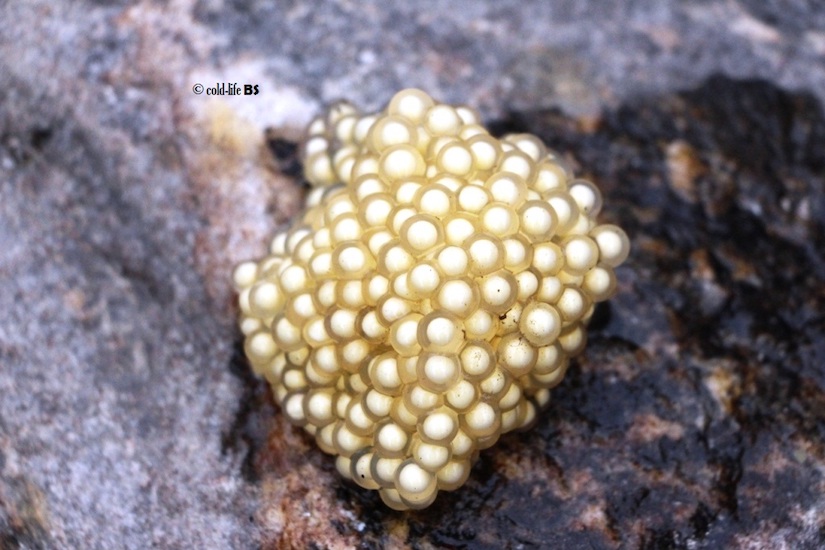
Fresh paha egg mass
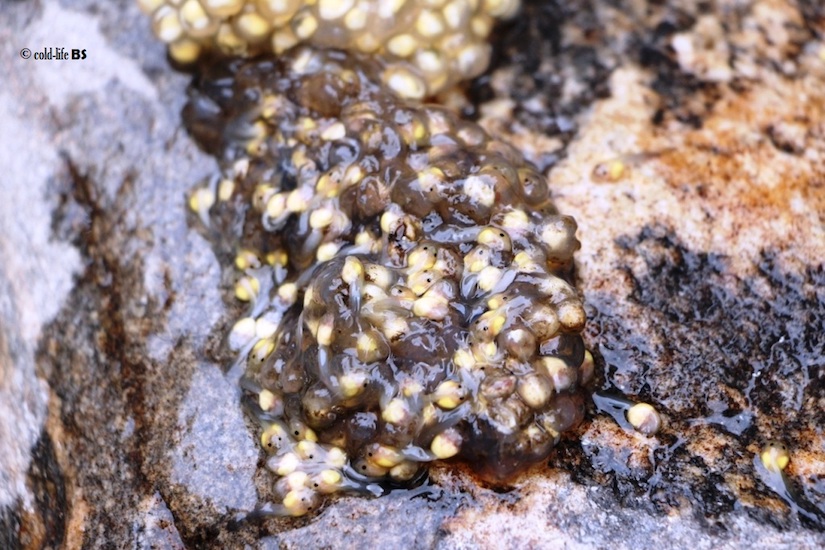
Developed paha tadpoles inside the jelly coated egg mass
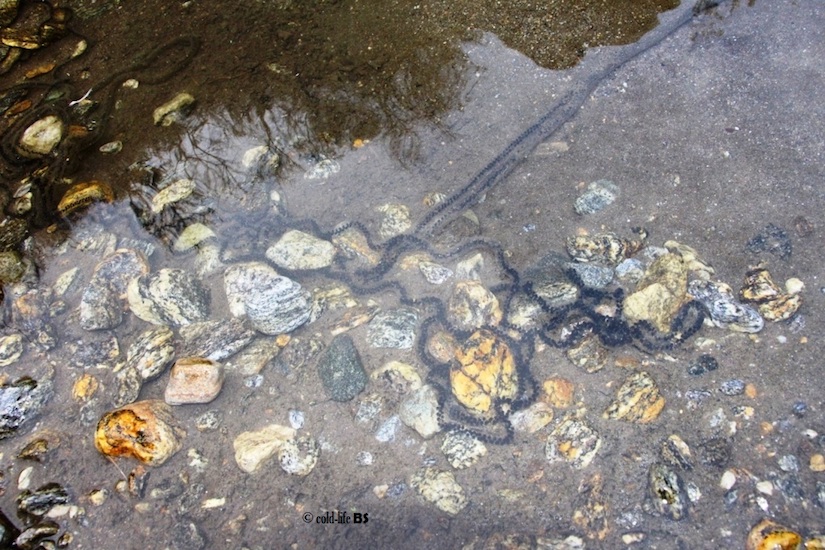
Toad eggs in long chain
We kept other tasks like Amphibian Conservation Dissemination Workshop, frog conservation posters distribution, formation of Amphibian Conservation Group (ACG) and ethnozoological study of paha use by local community in Manaslu in parallel with the amphibian survey. We conducted the Amphibian Conservation Dissemination Workshop in Philim (1,431 masl) of Sirdibas VDC, Lokpa (1,910 masl) of Chumchet VDC, Dyang (1,914 masl) of Bihi VDC and Prok village (2,436 masl).
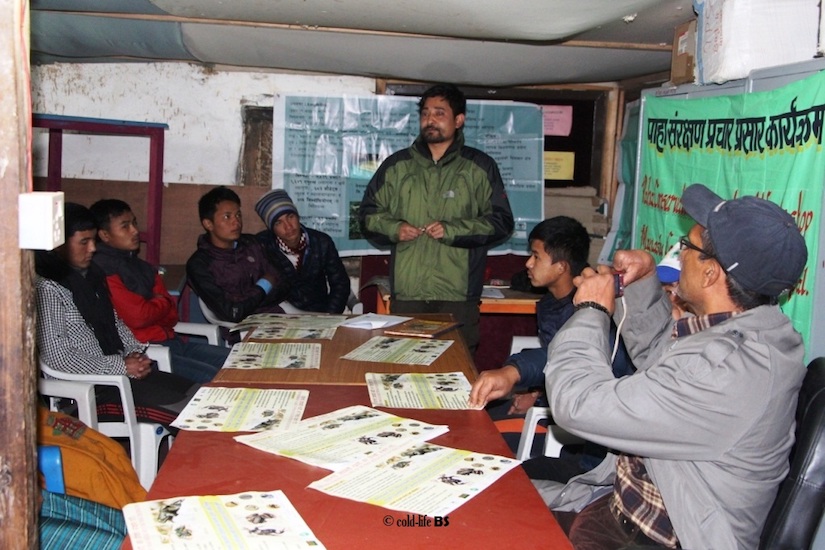
Amphibian Conservation Dissemination Workshop at Philim, Sirdibas
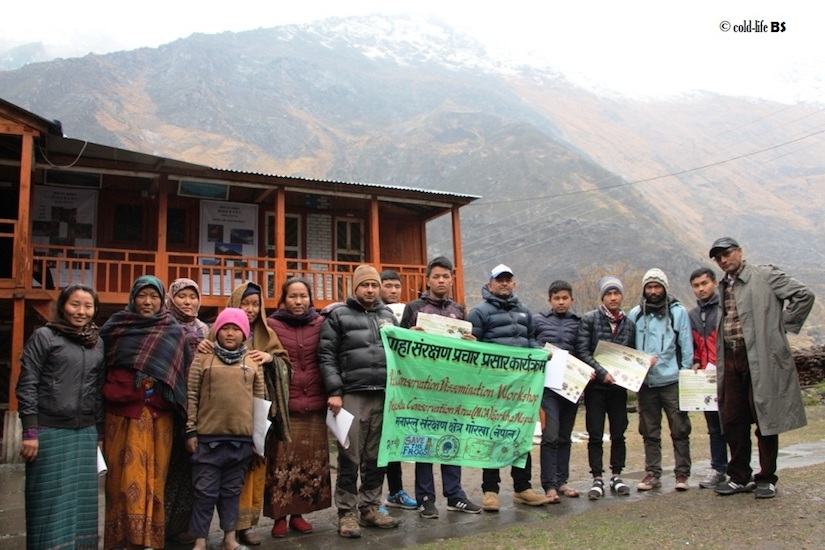
MCAP Office at Philim with Amphibian Conservation Group
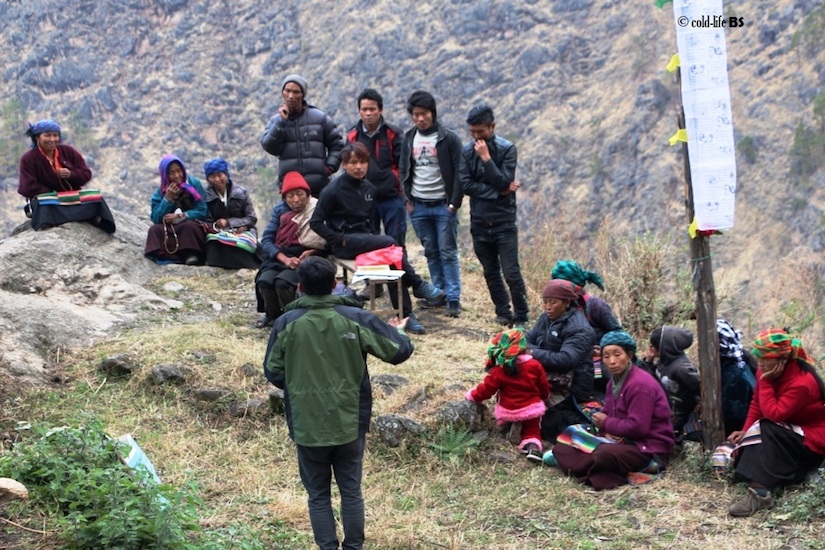
Amphibian Conservation Dissemination Workshop at Lokpa, Chumchet
The workshops were attended by local youth, students, teachers, local leaders, villagers, MCAP officials, Mother’s Group and Conservation Area Management Committee (CAMC) members.
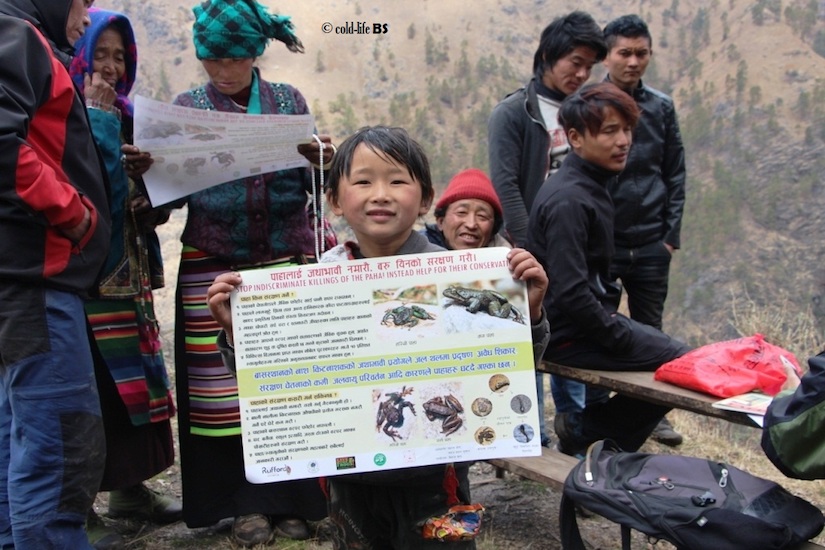
Local kid displaying paha conservation poster
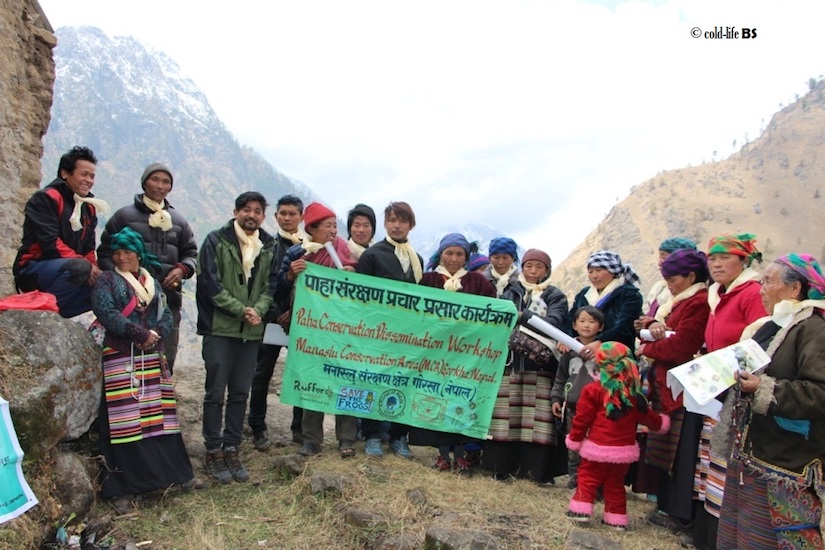
Amphibian Conservation Group at Pemathang monastery, Lokpa
Local people were encouraged to stop paha (stream frogs) collection in their villages and vowed to take necessary actions against those, if found guilty. In coordination with local community and MCAP, we supported the formation of Amphibian Conservation Groups in Sirdibas, Chumchet, Bihi and Prok VDCs.
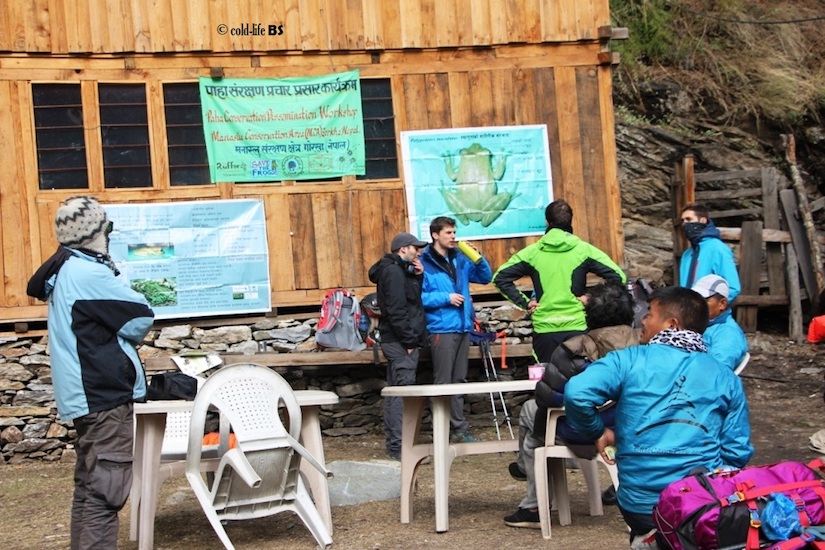
Tourists being a part of our workshop in Dyang, Bihi
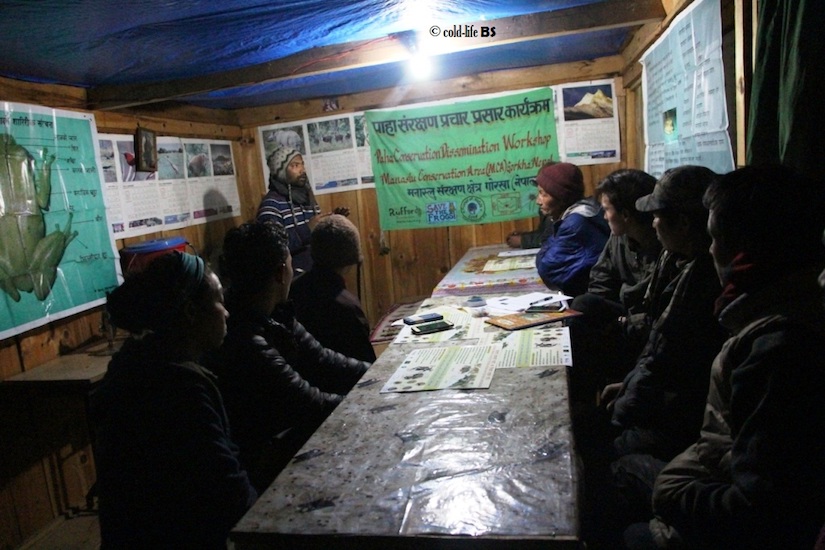
Amphibian Conservation Dissemination Workshop at Prok VDC
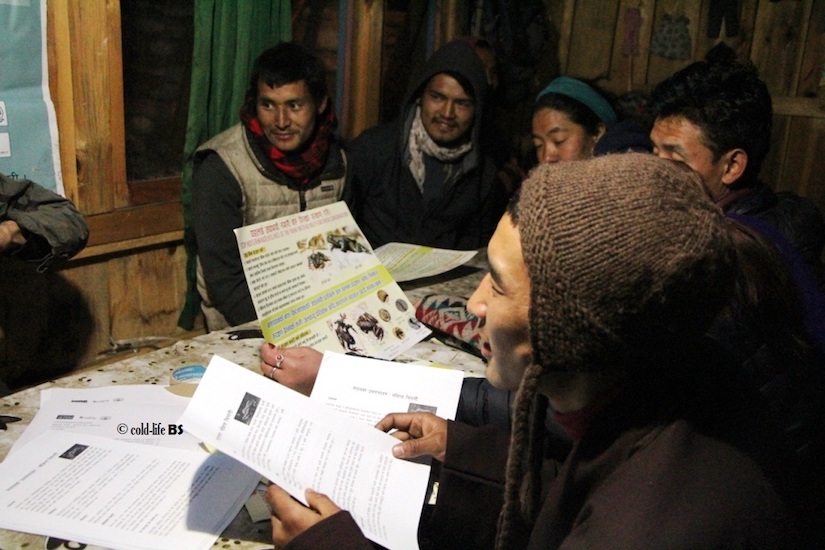
Locals discussing about paha
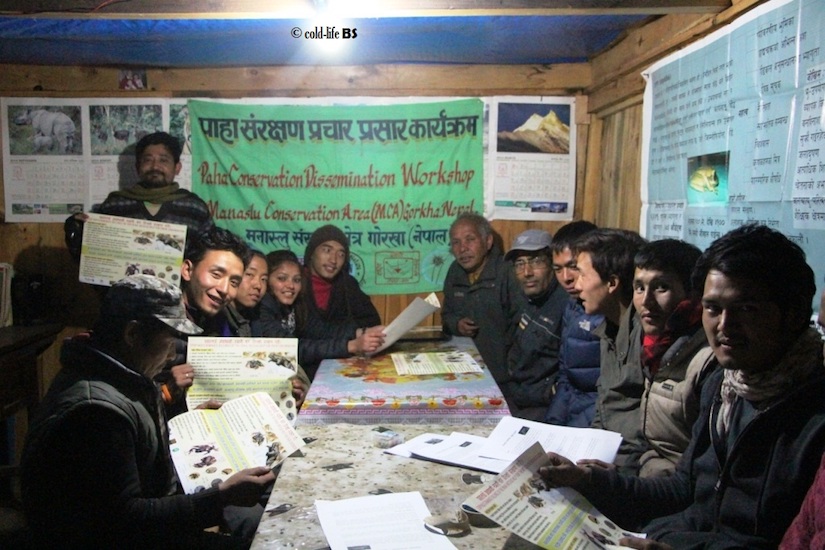
Amphibian Conservation Group at Prok
On March 21, we returned to Gorkha city where I gave ‘Amphibian Conservation Talk’ at Choice FM, 90.4 MHz and our conservation effort at Manaslu got the media exposure.
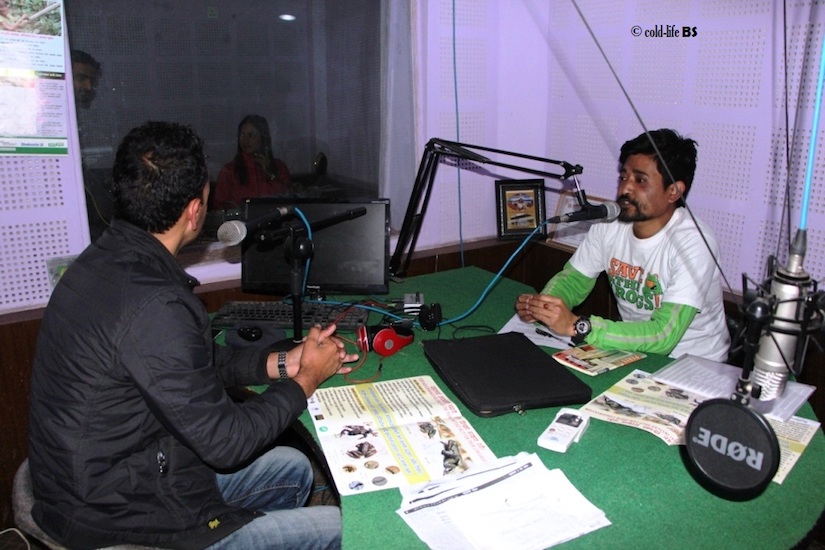
Choice FM 94.0 MHz studio
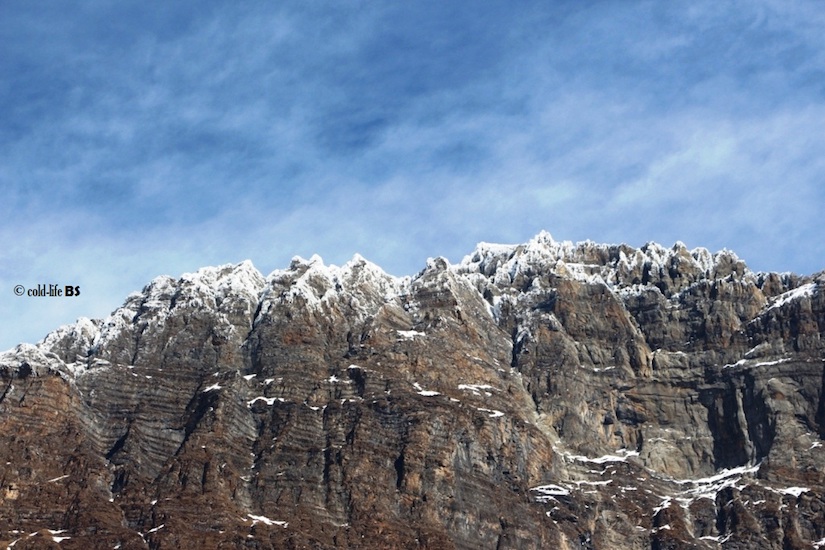
Snow crest at Prok

Manaslu panorama
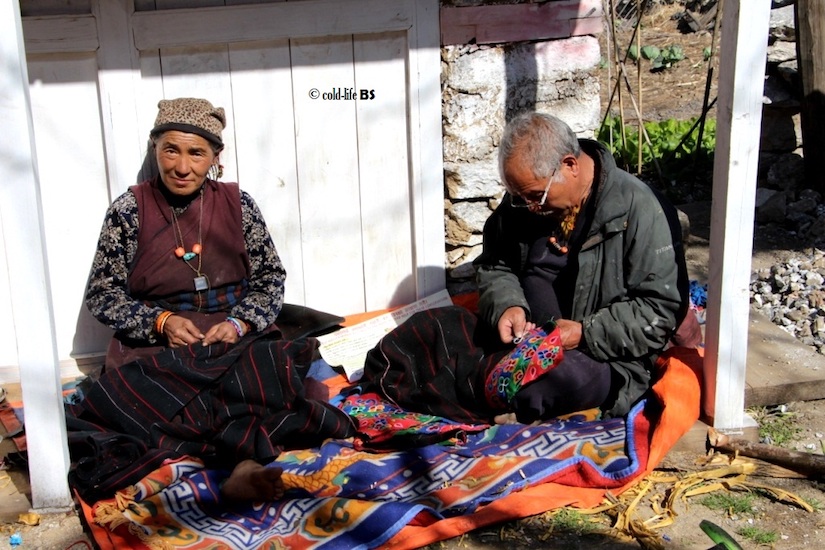
Meet the himalayan people
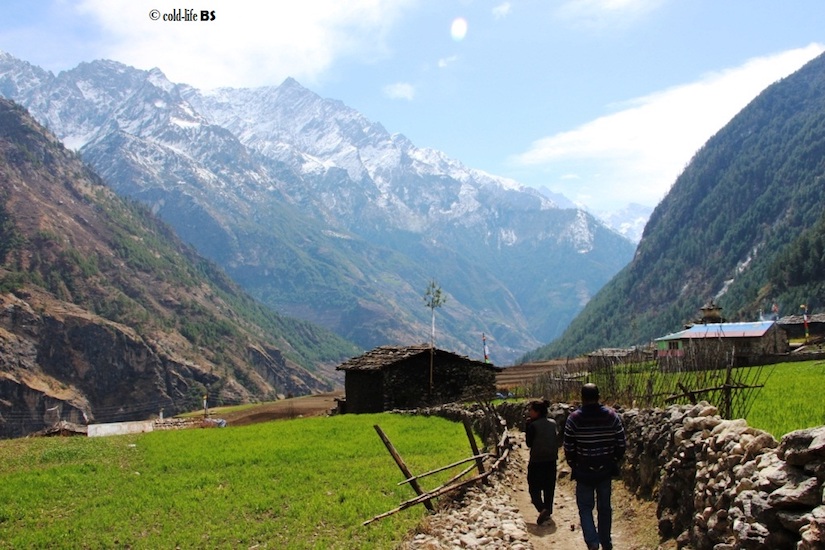
Farmlands of Prok
***
Biraj has won a Future Leader of Conservation Award and will be participating in the Amphibian Conservation Research Symposium (ACRS) to be held at Canterbury, UK on June 23-26, 2017. The award funds his travel expenses from Nepal. This will be his second time leaving Nepal (his first international trip was to Indonesia). He will be giving an oral presentation at the conference entitled “Saving Stream Dwelling Frogs (Paha) in the remote mountains of Manaslu Conservation Area, Nepal”. Thanks to Biraj for his dedicated efforts to save the amazing amphibians of the Himalayas!
2019 FOLLOWUP:
You can read about the results of the SAVE MANASLU’S FROGS Research Expedition here.


